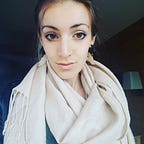Painting with the Full Palette of VR Tools
We commonly hear that Virtual Reality is a mixture of gaming, animation, video, and installation art. These mediums all offer different strengths to the palette of VR tools, from interactivity to photorealism.
When creating a VR experience, I find it useful to think backwards from the goal of the experience whether it be to increase retention while learning neuroscience or foster open mindedness for other cultures.
I thought I would share some slides I put together for students of Academy of Art to encourage them to mix mediums. You might find this useful in expaining VR to a newbie or if you are considering playing with a new element of VR.
First, a little reminder of why we migrated over to this crazy medium:
Think about WHY the experience you are making should be in VR..
Then, we get to the good stuff. Here’s my adaption of Kent Bye’s Elemental Theory of VR, which is amazing if you haven’t already read it.
